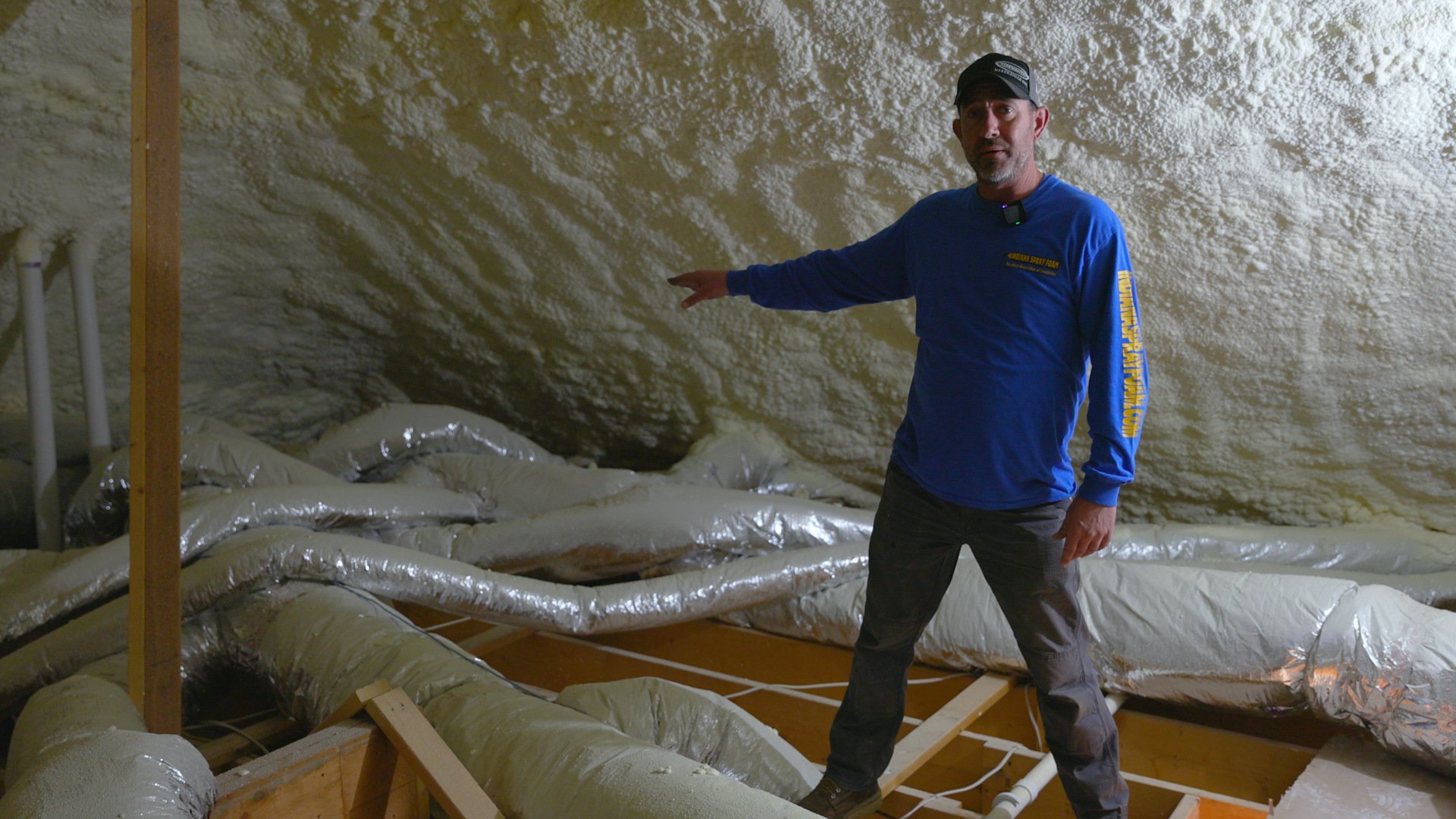Search for topics or resources
Enter your search below and hit enter or click the search icon.
April 21st, 2025
3 min read

When it comes to insulating your home, especially in new construction, how you insulate your attic can make a huge difference in comfort, energy efficiency and overall home performance. At Indiana Spray Foam, we specialize in a method called the closed attic assembly — and it’s quickly becoming the gold standard for homeowners who want a better, more efficient solution.
A closed attic assembly means we completely seal off your attic from the outside environment. Traditional attics are ventilated, which allows outside air to circulate through soffit vents and out the ridge or gable vents. But with a closed attic, we block off all soffits and apply spray foam insulation directly to the underside of your roof deck.
This approach stops outside air from entering the attic entirely. By moving your thermal boundary from the attic floor to the roof deck, your attic becomes part of your home’s conditioned space — and that changes everything.
Anyone who’s been in a traditional attic during the summer knows just how hot it can get — easily reaching 150 to 180 degrees. That kind of heat doesn’t just stay in the attic; it radiates down into your home and forces your air conditioner to work harder.
With spray foam applied to the roof deck, the attic temperature stays remarkably stable — often only 5 to 7 degrees different from the temperature inside your home. That’s a major improvement that leads to better comfort and reduced energy costs.
One of the biggest benefits of a closed attic is how it protects your ductwork. Most homes have HVAC ducts running through the attic, and even though these ducts are insulated, that insulation is typically minimal and ineffective in extreme temperatures.
In a traditional attic, where insulation is blown onto the attic floor, the ducts remain exposed to extreme heat or cold. This can cause your HVAC system to lose efficiency and drive up your energy bills.
With a spray foam-insulated roof deck, your ductwork stays within the conditioned envelope of your home. That means your heating and cooling systems don’t have to work nearly as hard, and you enjoy better performance year-round.
If you were to insulate an attic using cellulose or blown-in fiberglass, you’d need a thick layer — often three feet or more — to achieve the same R-value you get from spray foam. That kind of weight puts unnecessary stress on your ceiling drywall and makes it difficult to access anything underneath.
With spray foam, there’s no need to load up your attic with bulky insulation. Everything remains lightweight, clean and accessible.
Spray foam on the roof deck doesn’t just insulate — it simplifies maintenance too. With traditional insulation, trying to navigate through several feet of material just to access a wire, pipe or HVAC component is a nightmare. In a closed attic, all your mechanical systems — like electrical lines, ductwork and exhaust fans — are easy to reach.
This is especially helpful if you ever need to repair a loose vent, add a new cable line or service your HVAC. Everything is visible and easy to work on without disturbing layers of insulation.
Another critical part of the closed attic system is properly venting appliances. At Indiana Spray Foam, we make sure every kitchen hood, bathroom fan and exhaust system is vented all the way to the outside soffit. We seal around these vents and ensure spray foam coverage is at least 6 to 7 inches deep on the roof deck, so no outside air sneaks back in.
This extra attention to detail helps maintain the integrity of your conditioned space and supports better indoor air quality.
Spray foam insulation in a closed attic assembly is more than just a trend — it’s a smart investment in the comfort, efficiency and longevity of your home. Here’s a quick recap of the benefits:
• Thermal efficiency: Keeps attic temperatures within a few degrees of your indoor space.
• Energy savings: HVAC systems run more efficiently, reducing energy costs.
• Protects ductwork: Keeps pipes and ducts within the conditioned space.
• Lightweight: No heavy cellulose or fiberglass weighing down ceilings.
• Full accessibility: Easy access to wiring, vents and HVAC equipment.
• Proper venting: Ensures safe, efficient airflow for all exhaust systems.
If you’re building a new home or considering a retrofit, a closed attic assembly with spray foam could be the smartest decision you make.
Contact Indiana Spray Foam today to learn more about how we can transform your attic into a well-insulated, energy-efficient space that works with your home — not against it.